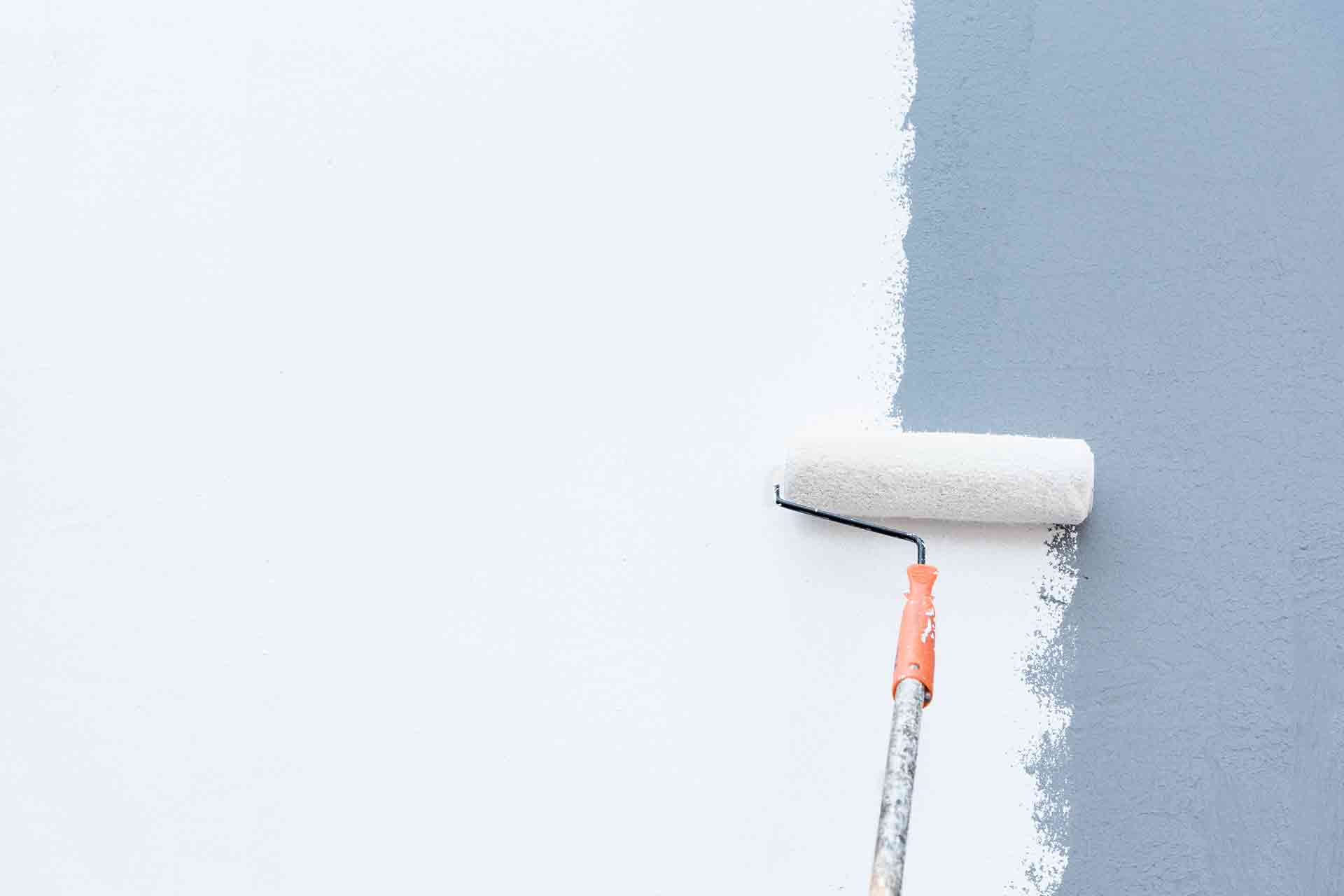Blog>How-To Guides>How to weather coat your home
Last updated: 18 October 2024
How to weather coat your home
Weather coating is an effective way to protect your home from the natural elements. With our step-by-step guide to follow, reducing the chance of external damage to your property couldn't be easier.
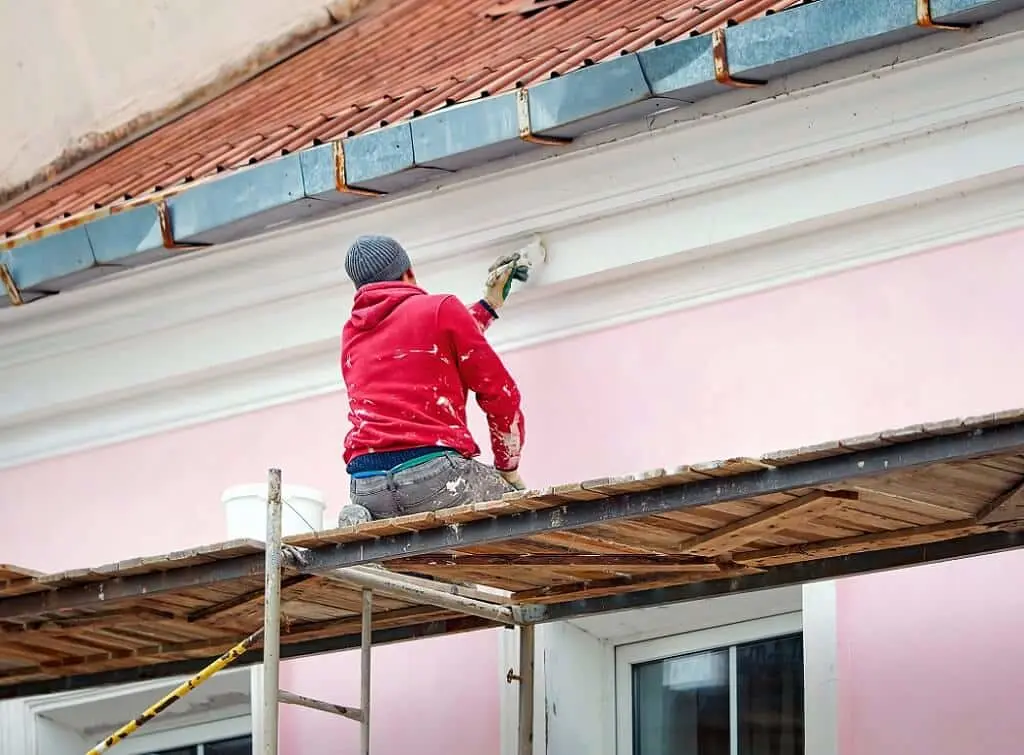
What is a weather coat?
Weather coat paint is used to protect a property's exterior from the natural elements.
Over time, wind, rain and extreme temperatures can all take their toll on your home's appearance and condition. A weather coat will help to reduce the amount of weather damage and can be added to your property's walls and roof.
Homes not protected by a weather coat paint are more prone to the following issues:
Cracked exterior paint
Faded exterior paint
Water ingress
Leaks
Roof damage
Damp
Spalling
Mould and algae growth
That means the benefits of weather coating your home can address these issues. But they can also mean:
Improved property appearance
Enhanced energy efficiency
Increased property value
Improved kerb appeal
Reduced risk of weather damage
Being one of your most important assets, your home should be protected.
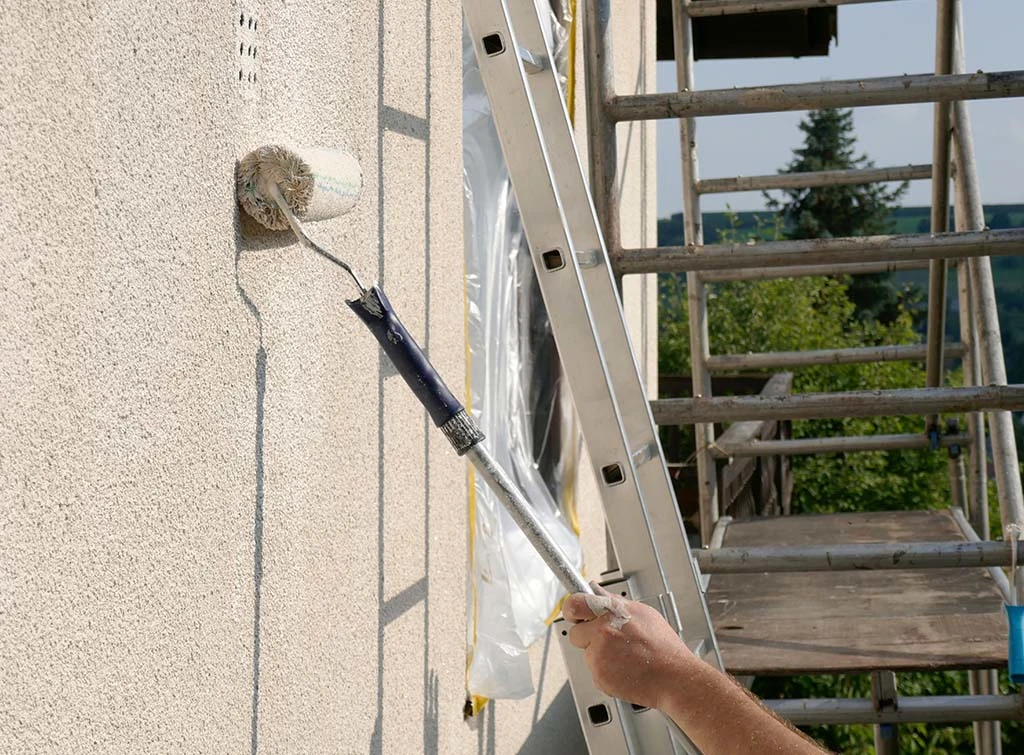
Types of weather coating paint
There are various weather coat paints available. The right type of weatherproofing paint will depend on your location and the condition of your home's exterior.
Let's take a closer look at the different options:
Elastomeric paint
Coating your home with an elastomeric paint is one of the bests ways to protect your home from the natural elements. This paint has an elastic texture and creates a watertight seal around a property.
Elastomeric paint will help keep your home safe from damage come rain or shine. The paint will not crack and is a great option if you live in an area prone to extreme weather conditions.
Silicone-based paint
Silicone-based exterior paints have many benefits. The flexible and breathable texture will offer peak protection in all weather conditions.
A silicone-based weather coat will repel rain water and prevent mould growth. This paint will also provide your home with added UV protection and an additional layer of insulation. Silicone-based coatings are well suited for properties in humid or coastal areas.
Acrylic paint
Durable, flexible and water-resistant, acrylic paint offers reliable all-round weather protection.
Acrylic weather coat paint is long-lasting and will enhance your home's appearance for many years to come. This paint is also easier to work with than some of the other types of weather coating products.
Bituminous paint
Look no further than bituminous paint if you are looking for high quality weather protection. This weather coating paint is corrosion-resistant, durable, UV resistant and water proof.
A bituminous based paint can be used to weather coat most structures. Coating your home with this type of paint can provide you with more than 15 years of weather protection.
Polyurethane paint
The flexible structure of polyurethane paint makes it a great option for homes in areas prone to temperature fluctuations. Instead of cracking, polyurethane will expand and contract during extreme weather conditions.
This durable paint is perfectly suited for weather coating a roof, as well as any metal surfaces. Due to it's water resistant formula, polyurethane paint is well suited to coastal properties.
Types of exterior weather coating
Not all weather coating products offer the same type of weather protection. Some paints are better suited for UV protection and others offer higher levels of waterproofing.
Commonly used types of weather coating include:
Roof coating - Weather coating your roof has many long-term benefits. A weather coated roof will be less prone to leaks, damp and UV damage
Heat-resistant coating - Exposure to sunlight can cause your home's walls to crack and fade. A heat-resistant coating will reflect sunlight and reduce UV damage to your property
Anti-fungal coating - Homes located in rainy areas are more prone to damp, mould and mildew growth. An anti-fungal coating will minimise the growth of mould, algae and other fungal problems
Waterproof coating - Waterproof coating is added to a property to reduce the risk of water ingress and damp. This type of coating can be added to a property's walls and roof
We recommend contacting an experienced tradesperson to find the best weather coating solution for your property.
See the tradespeople we've checked and recommend for your job
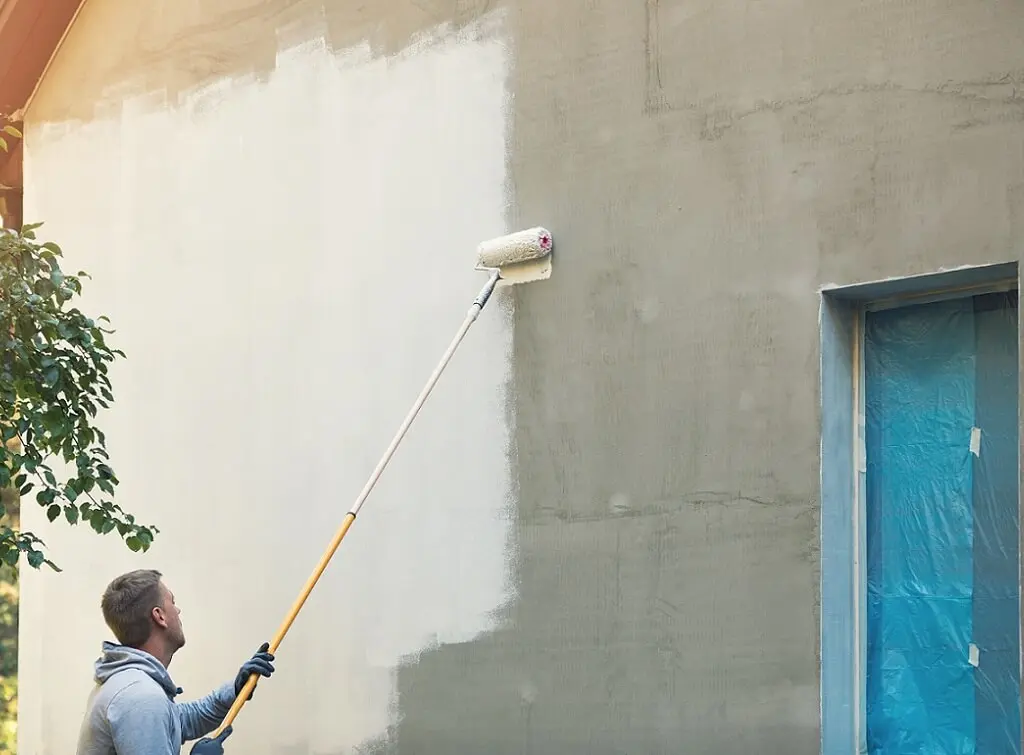
How to weather coat your home
Applying a weather coating paint to your home has many long-term benefits. We recommend hiring a professional to do the job as working at height can be dangerous.
DIY weather coating is really only an option if you have the necessary experience, skills and equipment.
Tools needed:
Weather coat paint
Paint sheets / masking tape
Paint rollers
Paint brushes
Ladder
If you have what you need, here is a step-by-step guide breaking down how to weather coat a house yourself:
1. Prepare the walls
Weather coat paint needs to be applied to a clean surface. Dirt, grime and natural oils can interfere with the paint's performance and also make application difficult.
Make sure all moss, dirt, cracked paint and other debris is gone before moving onto the next step.
2. Check for damage
You want your walls to be in the best condition possible before applying the weather coating paint.
Fill in any small holes with an exterior filler product. Sand down any uneven areas. Any loose mortar will also need to be fixed if you want to achieve the best weather coating results.
3. Apply the weather coating
Protect your windows and doors with paint sheets and masking tape.
You may need to apply a primer first if you are switching from one type of exterior paint to another. Adding a coat of primer paint can provide a better looking finish.
Next, apply your chosen weather coat paint using a roller for large areas and a brush to fill in smaller areas. A scraping tool can also be used to apply the paint and create a smooth coverage.
Leave the first coat to dry. The exact drying time needed will be displayed on the paint's packaging.
4. Apply second coat
A second coat is recommend to improve the durability of the paint. You will also be doubling up the level of weather protection your home receives.
At this stage texture can be added using the scraping tool. It is best to add texture one section at a time. This additional step will make weather coating your home more complex and time consuming.
Leave the second coat to dry.
5. Touch up
Once the second coat is dry, check over your walls and touch up any areas that need it.
Clean your painting tools and remove any masking tape and covers you used to protect your windows and doors.
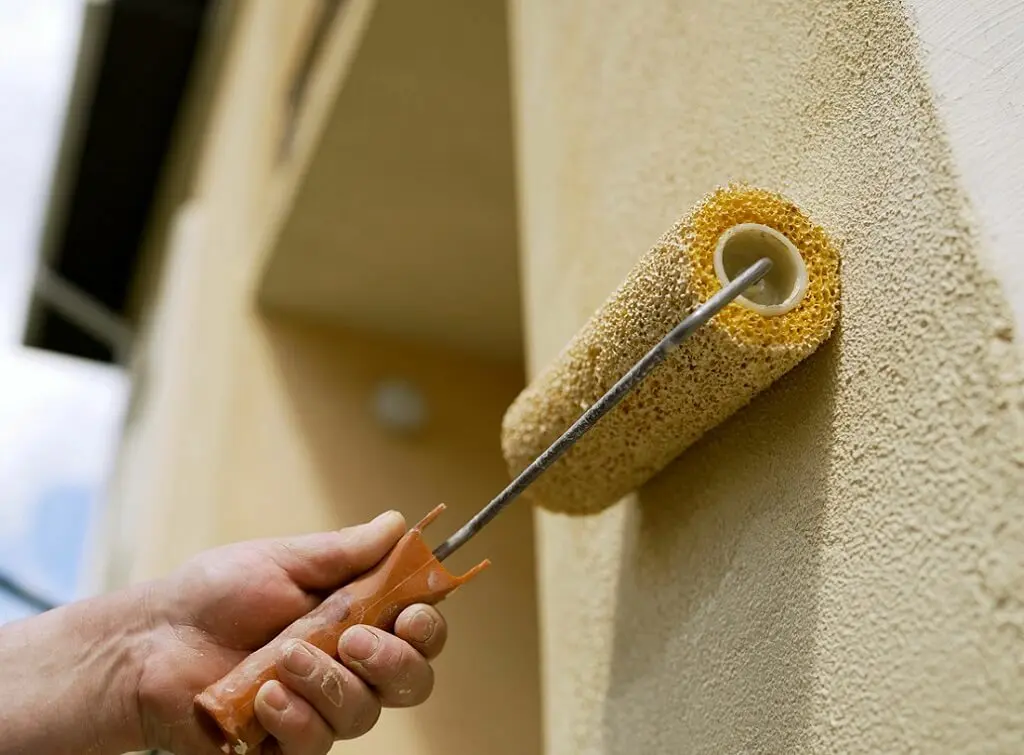
Weather coating costs
Does DIY weather coating sound like hard work? That's because it is! Painting your property's exterior walls and roof is a labour intensive, time consuming job.
We recommend hiring a professional to do the hard work for you. An experienced tradesperson will typically get the job done in less time and deliver better long-term results.
The following factors influence the cost of professional weather coating:
The size of your home
Areas to be covered - will the roof be coated as well as the walls?
Type of weather coating
Number of coats needed
Ease of access - fees will be higher if scaffolding is needed
Your location - tradespeople charge varying rate throughout the UK
The average price range for professional roof weather coating is £1,200 - £3,600. This job is often charged per m2 with costs ranging between £40 and £60 per m2.
These costs are for a liquid plastic coating. Different weather coating products will have varying prices.
Exterior wall weather coating costs also vary. Applying a clear weatherproof wall coating costs an average of £1,000 for a small terrace with easy access and up to£5,000 for a detached house or complex job.
Read our weather coating cost guide for a closer look at current prices.
Key takeaways
Weather coating can protect your home from damp, water ingress, sun exposure and other damage
Different weather coat paints have varying benefits for your home
DIY weather coating involves clearing your exterior walls, applying the paint and touching up small areas
Professional roof weather coating costs between £40 and £60 per m2
Search the Checkatrade directory to find weather coating experts in your area. We only approve tradespeople who pass our checks and meet our high quality standards.
See the tradespeople we've checked and recommend for your job
See the tradespeople we've checked and recommend for your job

